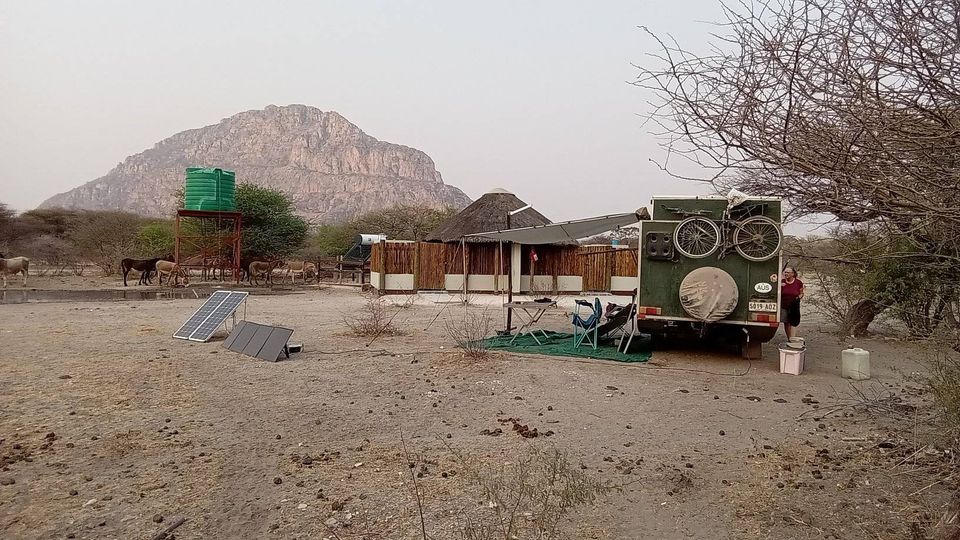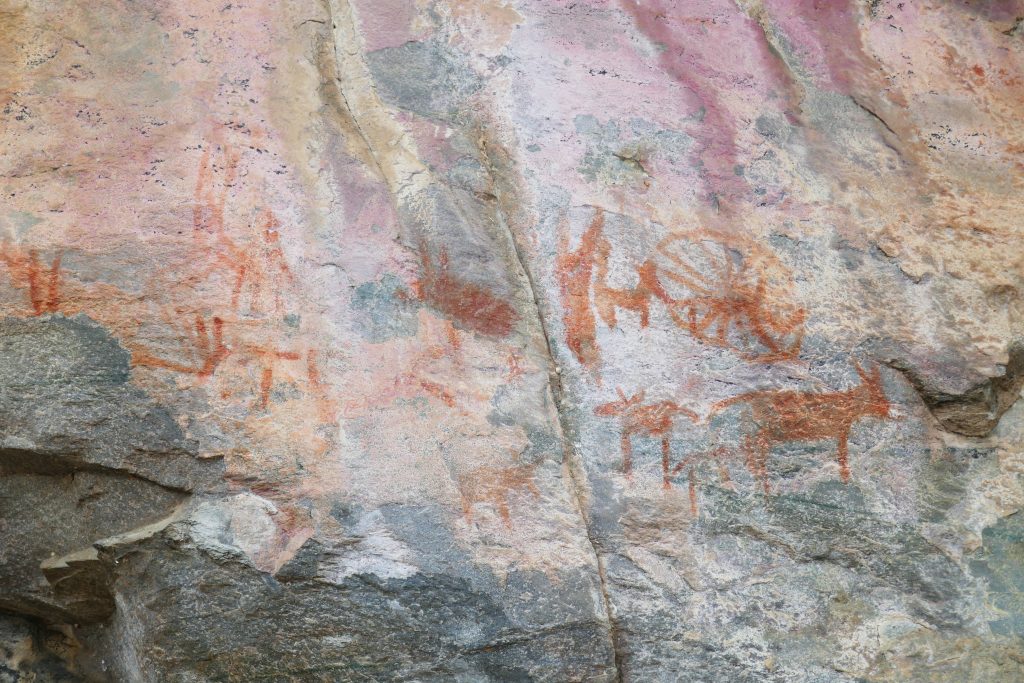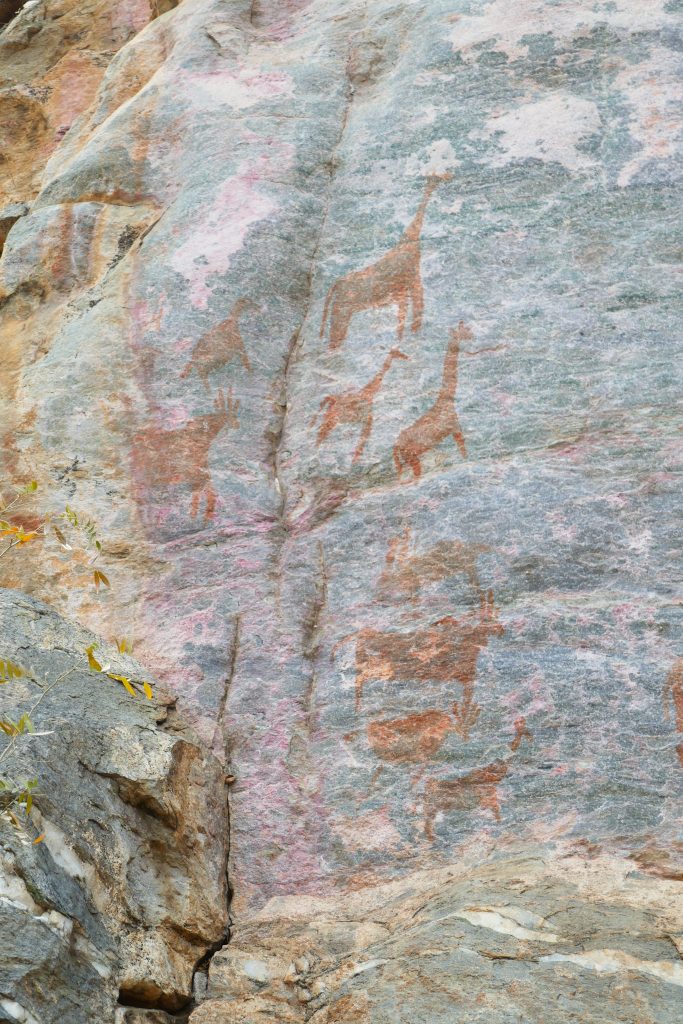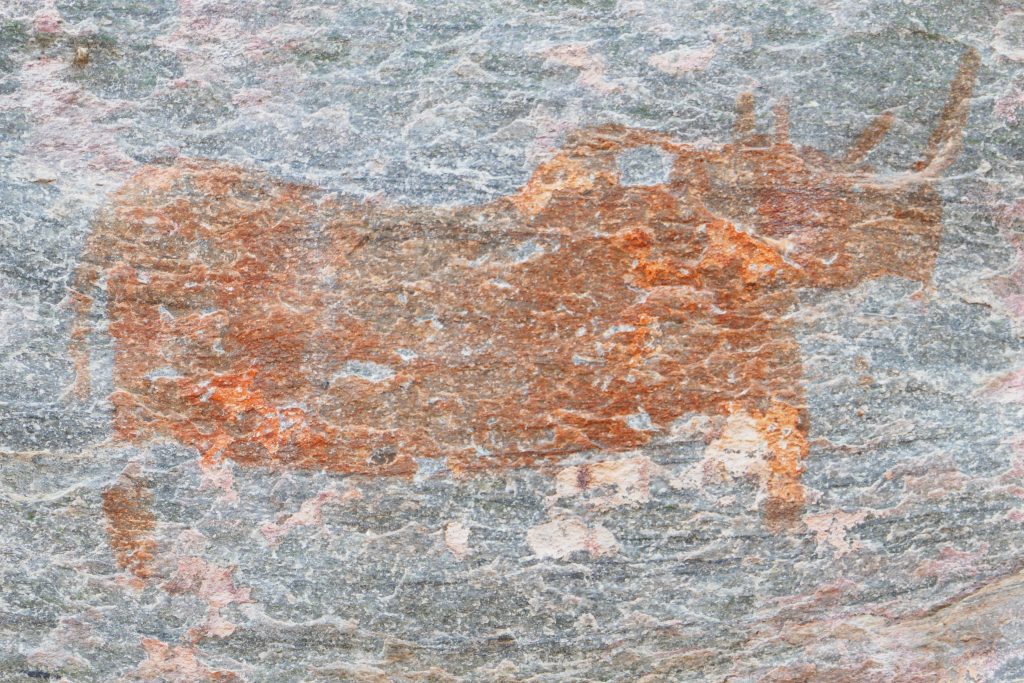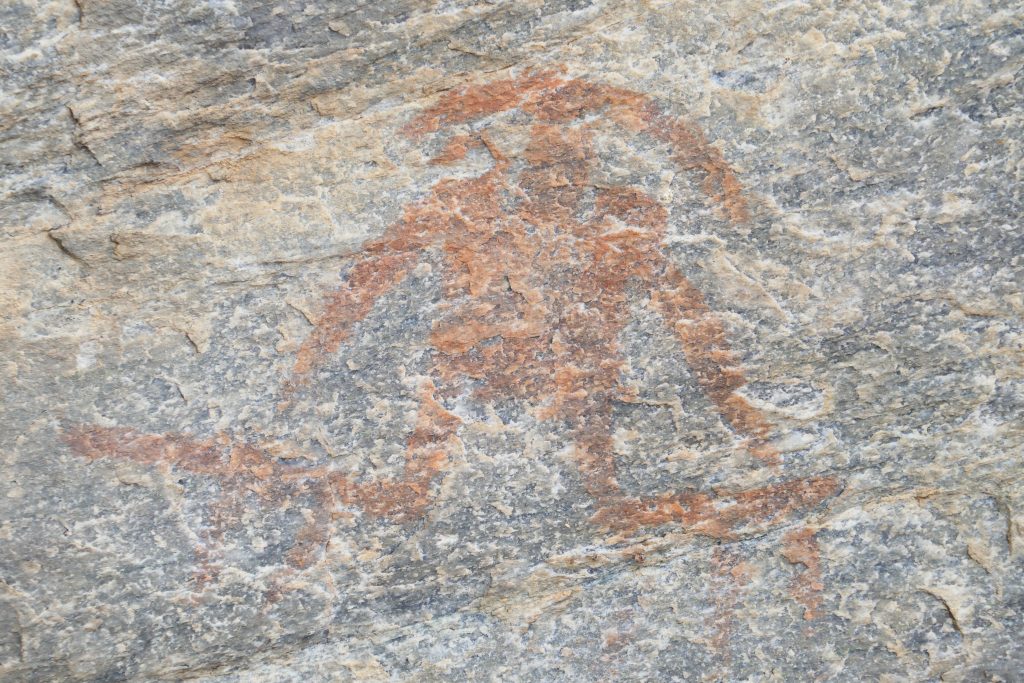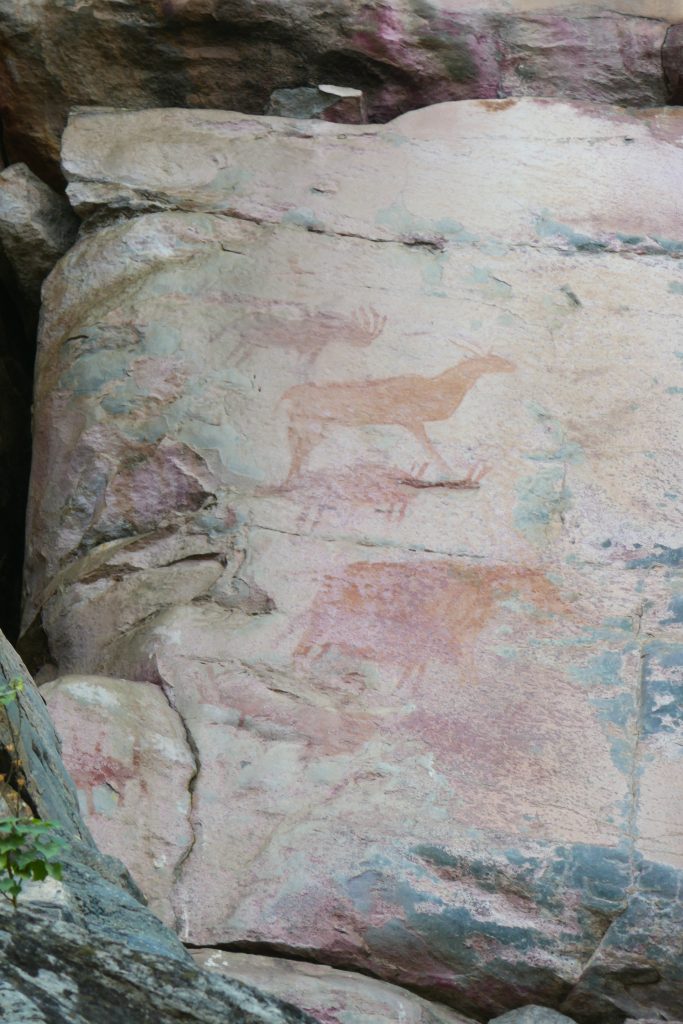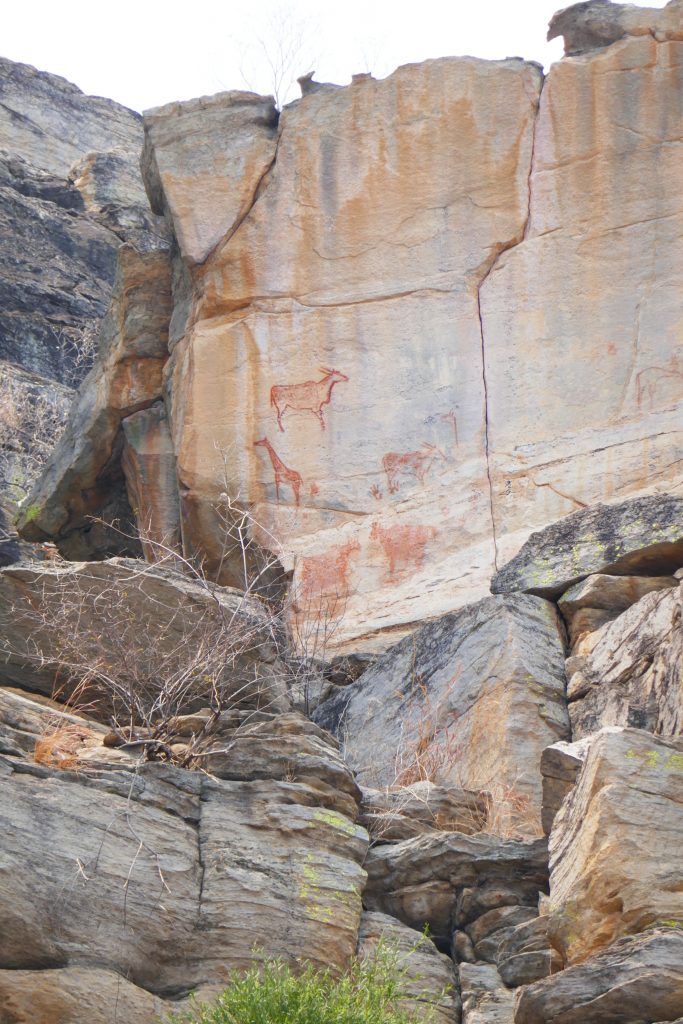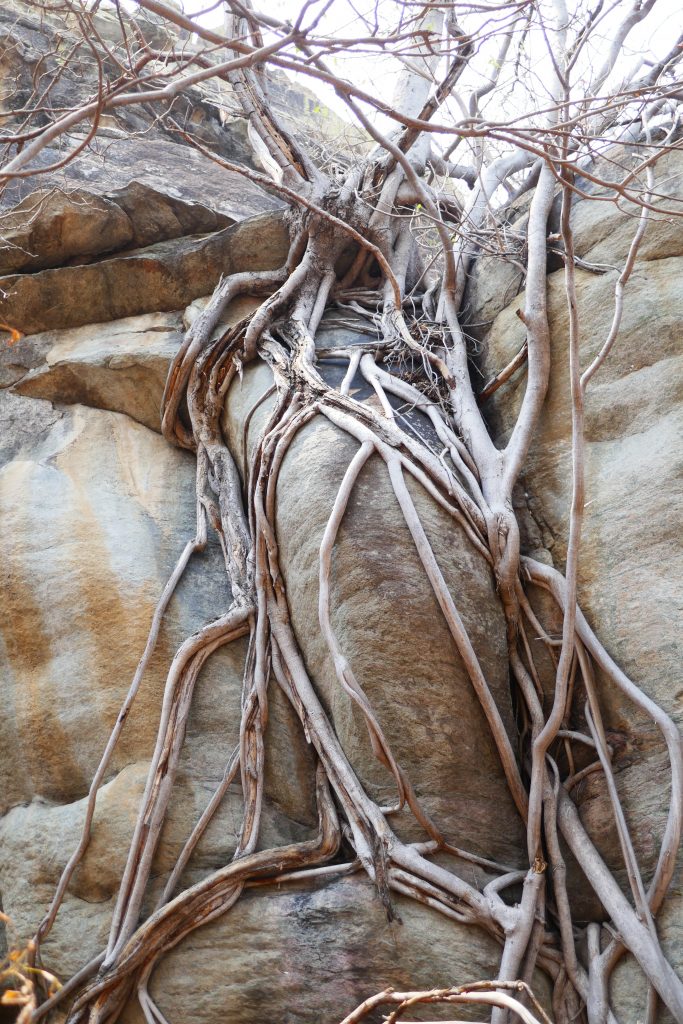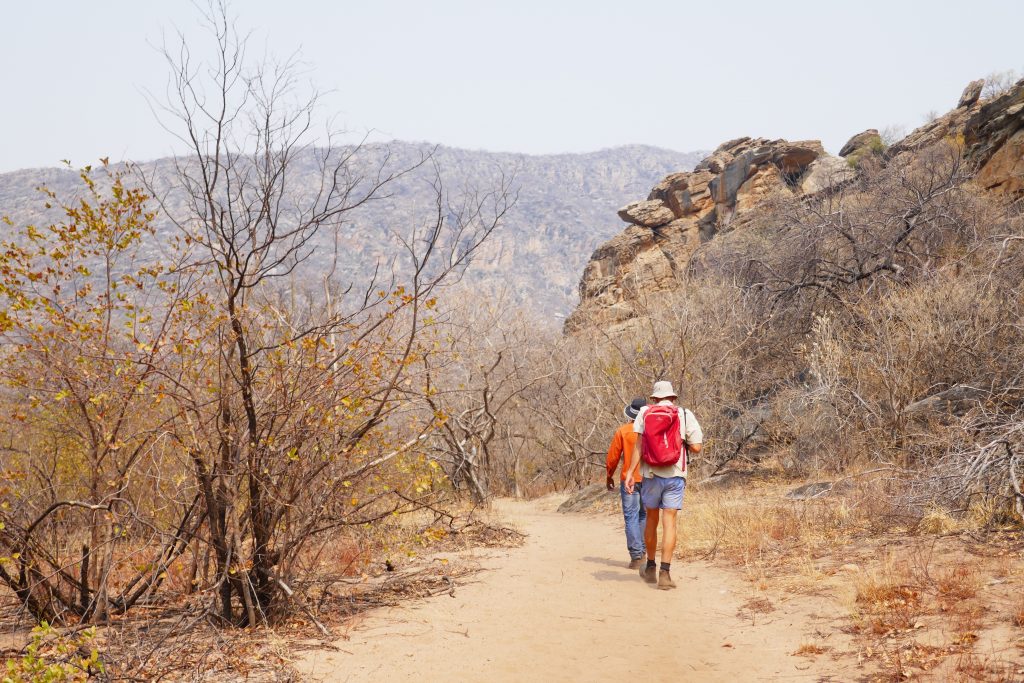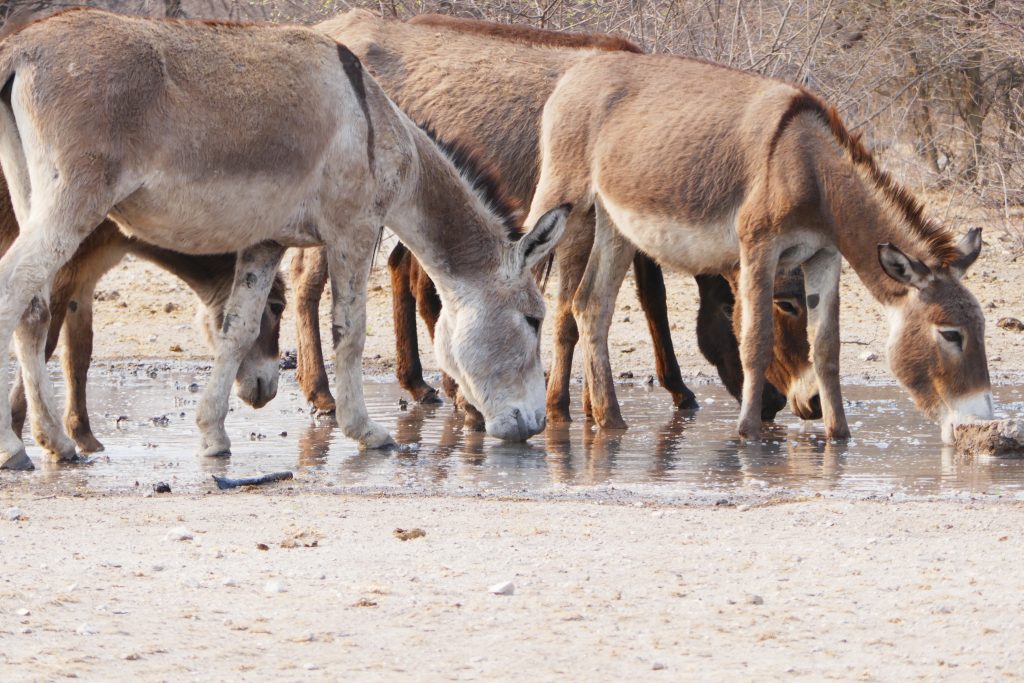We left Guma Lagoon early, partly so we would traverse the 10km sandy track to Etsha 13 when it was cool, making the sandy track easier to drive on. We re-inflated our tyres at Etsha 13, only to find our compressor air line had a leak, but not bad enough to stop us inflating them. We headed up the crumbling bitumen of the A35 towards the turn-off to Tsodilo Hills. The road to Tsodilo hills is a dusty track, and at its end we reached the Tsodilo Hills community campsite. We paid out dues and checked out the campsite. Then we headed up to the Museum and the guides that could take us around the rock paintings. We arrived and found several other people at the museum, including a couple of Australians who were a bit surprised to find a South Australian registered car driving around Botswana. A guide came up and introduced himself, and persuaded us not to do the whole Rhino walk, but just to the do the first half and turn around. It was a hot afternoon, and not the ideal time to be hiking around the Tsolido Hills. The paintings were interesting. Some of the descriptions of the paintings seemed a little dubious, and the age of the paintings must vary a lot because the styles are so different.
After a hot walk of a couple of hours, we finished at 3pm, and retired to our campsite, where there was an overflowing tank bringing all sorts of animals from around.
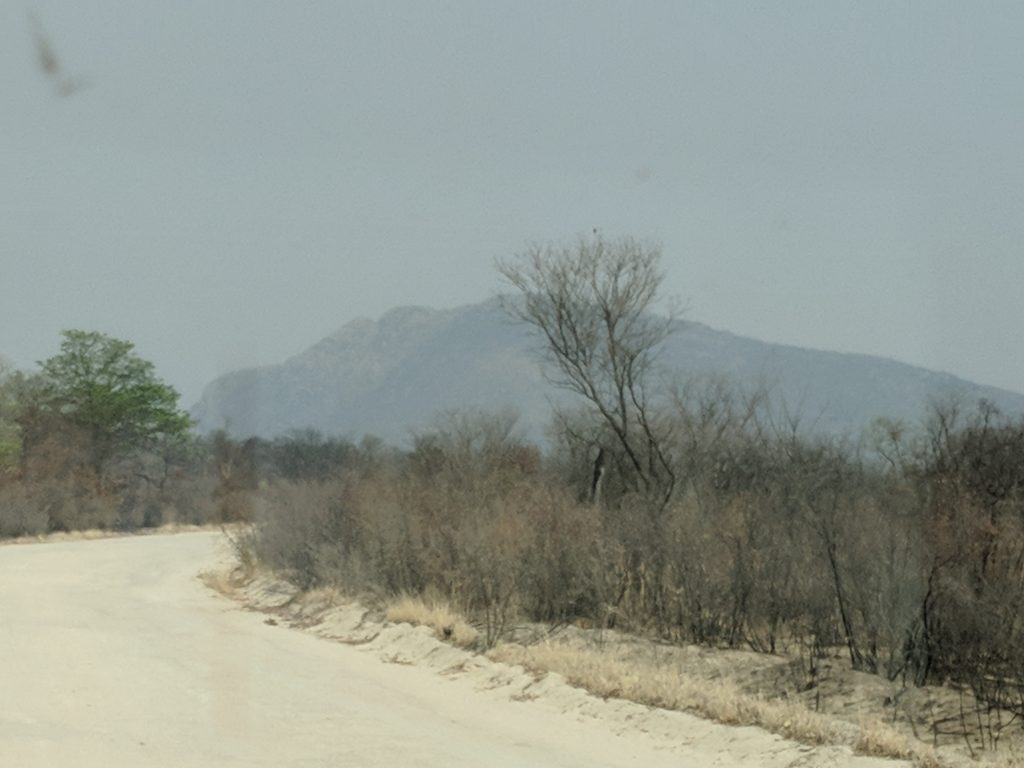
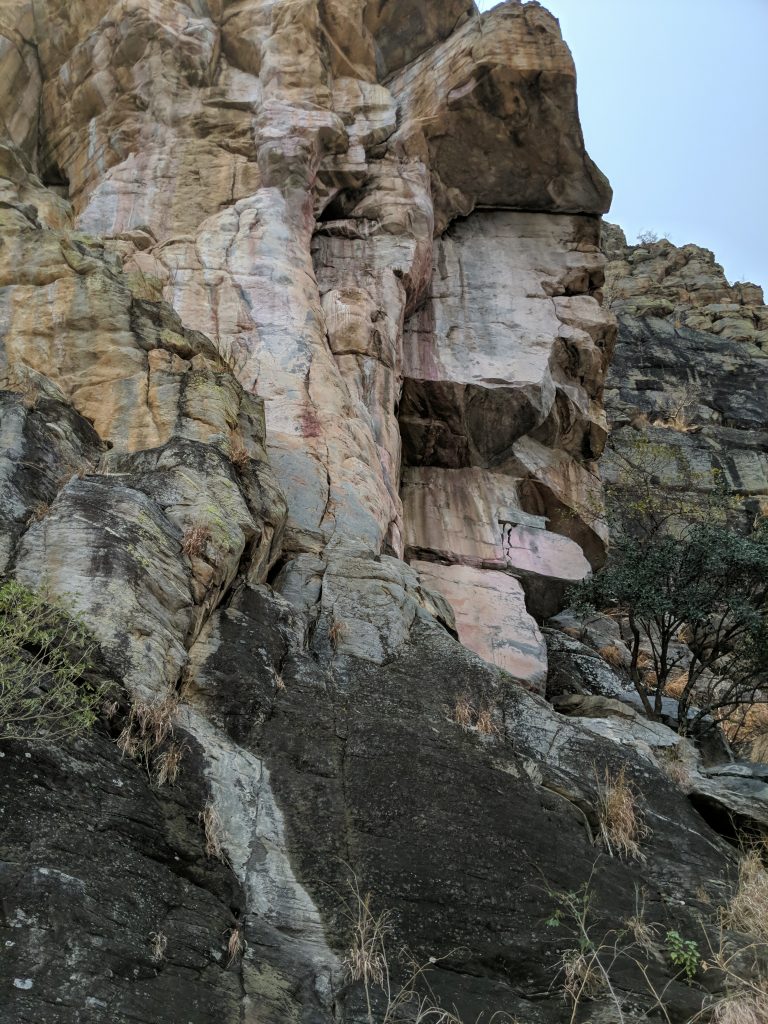
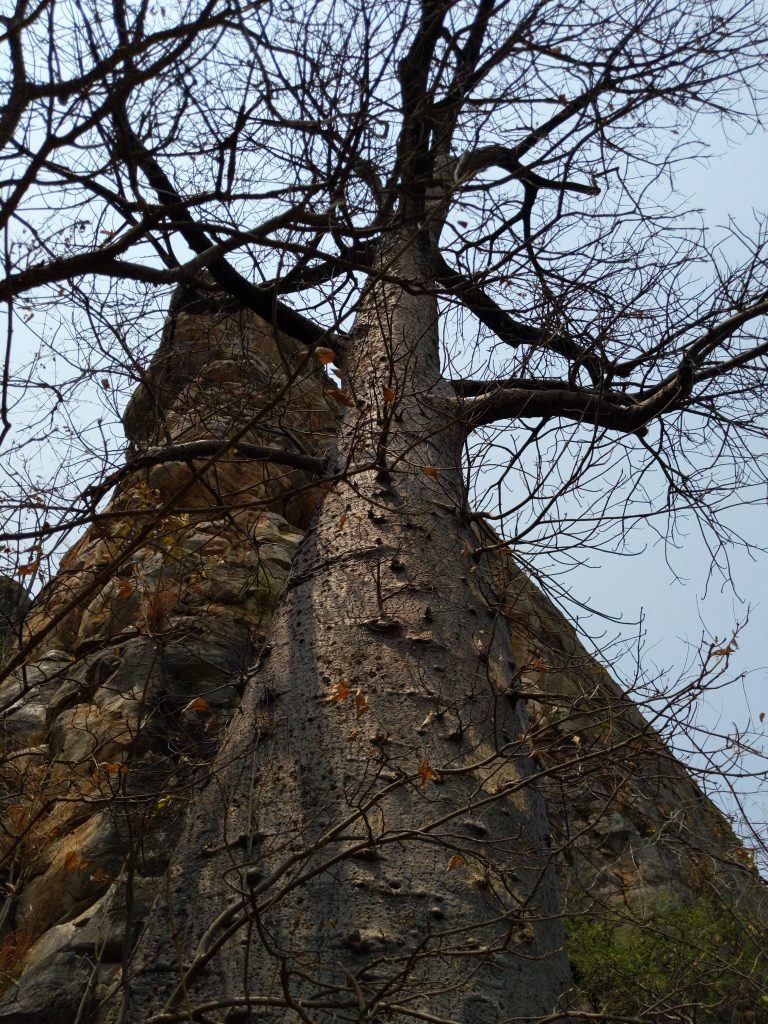
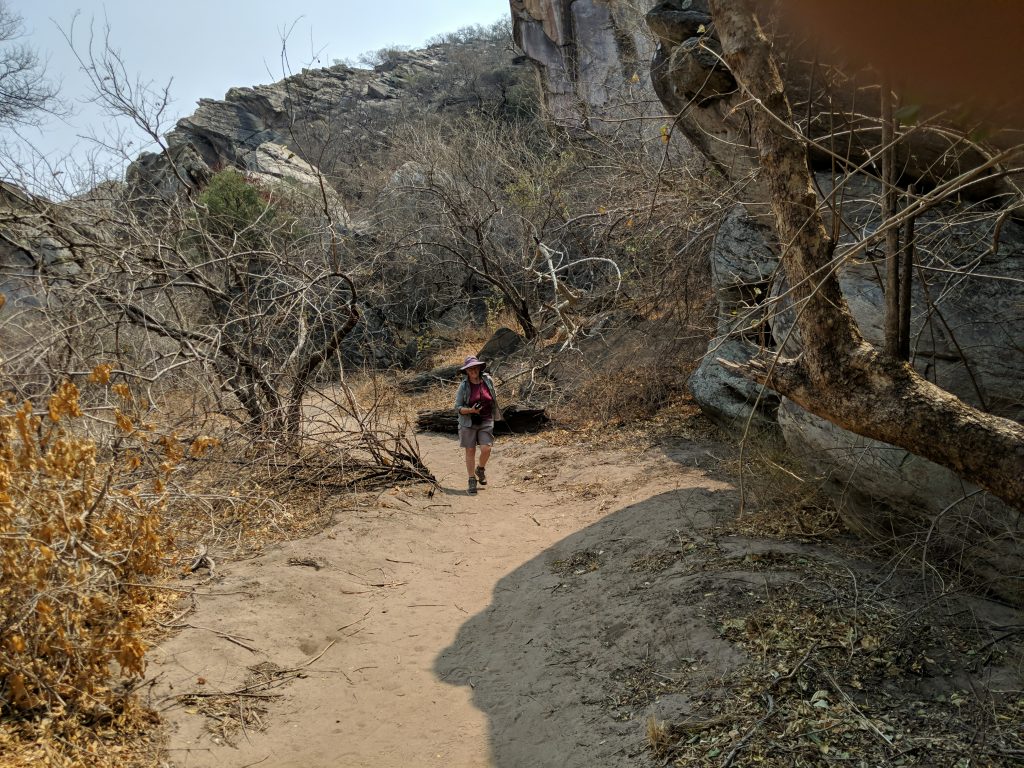
s
